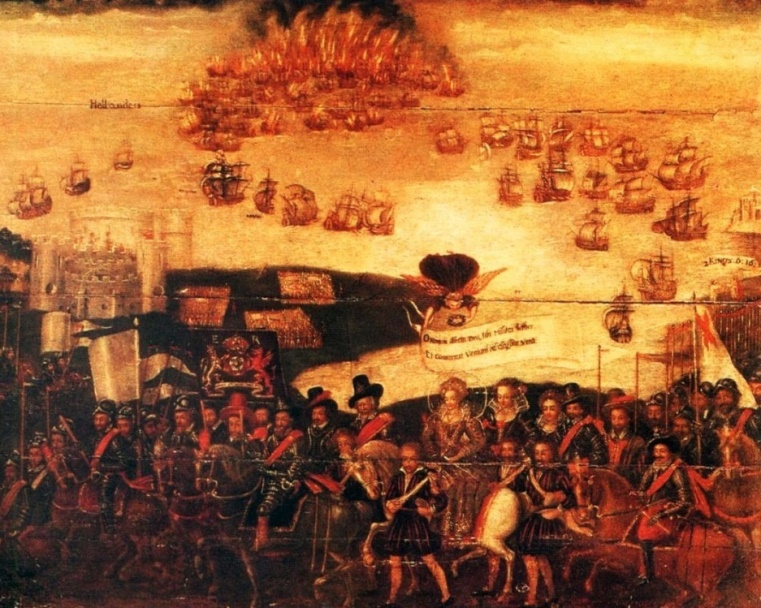The House of Tudor (50 page)
Read The House of Tudor Online
Authors: Alison Plowden
Tags: #History, #Biography & Autobiography, #Royalty, #Nonfiction, #Tudors, #15th Century, #16th Century

Mary’s public reaction was non-committal. Privately she regarded the whole idea with the utmost scepticism. If, as was implicit, Elizabeth really meant to recognize her right to the reversion of the English crown in return for accepting Elizabeth’s choice of husband, the Queen of Scots might have swallowed her understandable umbrage over the choice of the notorious Lord Robert. But she could not rid herself of the suspicion that she was being hoaxed; that by offering her cousin her own discarded lover, Elizabeth was planning to turn her into a laughingstock and perhaps prevent her from making some more advantageous marriage. Mary was not alone in her opinion and many people since have found it hard to credit that Elizabeth could ever have genuinely intended to part with her favourite -and not merely part with him but give him up to a younger and prettier woman, and her most dangerous rival. But in the last resort, what mattered to Elizabeth Tudor was the peace and security of her realm. If she had felt satisfied that her peculiar plan would have achieved this end, there seems little reason to doubt that she would have gone through with it.
Perhaps the most curious feature of the whole curious incident is the apparently unlimited degree of trust that the Queen was prepared to repose in Robert Dudley. She told James Melville that she would have married Lord Robert herself, had she ever been minded to take a husband. But being determined to end her life a maid, she wanted Mary to have him. For this, she explained, ‘would best remove out of her heart all fear and suspicion to be offended by usurpation before her death; being assured that he was so loving and trusty that he would never give his consent nor suffer such thing to be attempted during her time.’
Melville spent about ten days in London as Mary’s special envoy during September 1564 and saw Elizabeth every day. She displayed an insatiable curiosity about the cousin she had never seen and wished repeatedly that they might meet. When Melville jokingly offered to smuggle her into Scotland disguised as a page, so that she might see his Queen, Elizabeth smiled and said, ‘Alas! that I might do it.’ But she told him she wanted a closer friendship with Mary in the future and that ‘she was minded to put away all jealousies and suspicions between them.’ Unhappily, though, the Queen of Scots found herself unable to conquer her aversion to the idea of marriage to the horse-keeper, in spite of the fact that he had now at last been elevated to the dignity of Earl of Leicester, and, in any case, by the following spring, her actions had ceased to be governed by policy. For Mary had fallen head over heels in love with her first cousin, Henry Stuart, Lord Darnley, now a graceful, ‘lady-faced’ youth of nineteen, and was no longer willing ‘to be ruled by good counsel’. She quarrelled fatally with Moray and the ‘Protestant party and had apparently ceased to care if she offended Queen Elizabeth. Her old admirer, Nicholas Throckmorton, was shocked at the change in her and William Cecil, as usual, feared the worst.
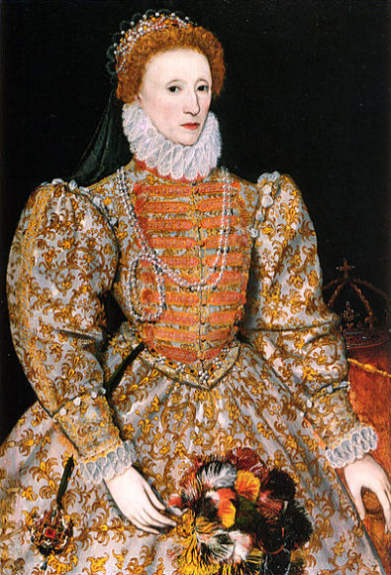
63 The young Queen Elizabeth by an unknown artist.
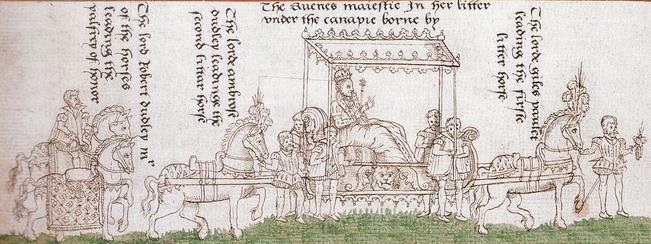
64 Elizabeth proceeding to Westminster on the day before her coronation, 14 January 1559. The Queen is accompanied by Lord Ambrose Dudley and Lord Giles Paulet and followed by her Master of Horse, Lord Robert Dudley.
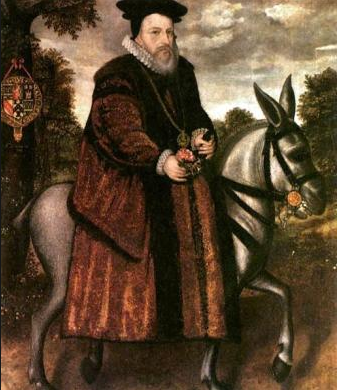
65 Lord Burghley riding a mule in his garden; artist unknown.
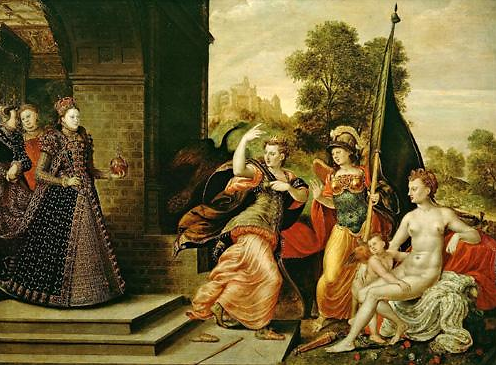
66 Queen Elizabeth I confounding Juno, Minerva and Venus’ by Hans Eworth, 1569; courtly allegories enhanced the mythical image of the virgin Queen which gave her lie hold on the imagination of her subjects.
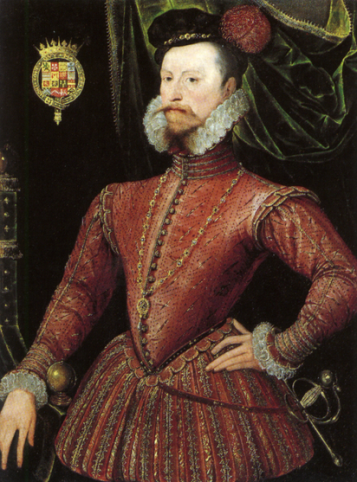
67 Robert Dudley, Earl of Leicester; artist unknown.
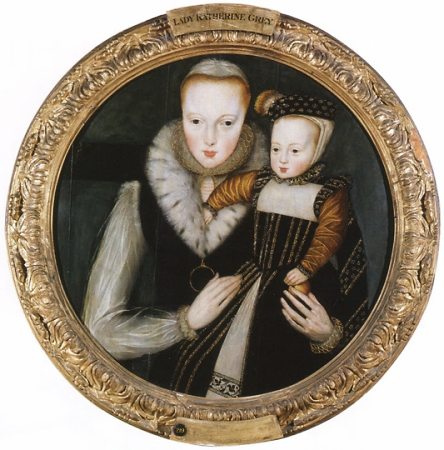
68 Lady Katherine Grey and Edward, her elder son by Edward Seymour, earl of Hertford, born in the Tower on 24 September 1561.

69 ‘The Succession of Henry VIII’, painted in Elizabeth’s reign, shows Henry handing his sword to Edward while Philip and Mary lead in Mars, the god of war, and Elizabeth leads in peace and plenty.
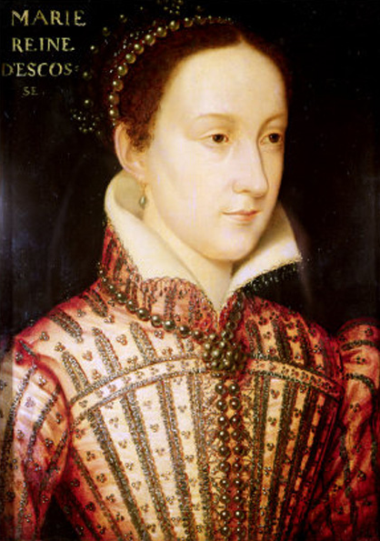
70 Mary Queen of Scots; artist unknown.
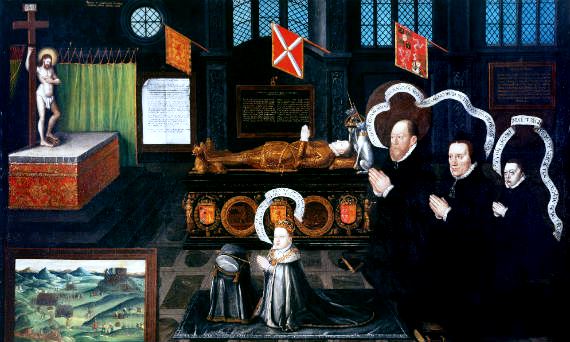
71 The Darnley Cenotaph painted in 1567 for the Earl and Countess of Lennox. The infant James VI, later to succeed to the Tudors’ throne, kneels before the effigy of his father. Behind him the Earl and Countess of Lennox and their younger son, Charles Stewart, pray for the revenge of Darnley. Mary’s surrender at Carberry Hill in 1567 is shown in an inset in the left-hand corner.
